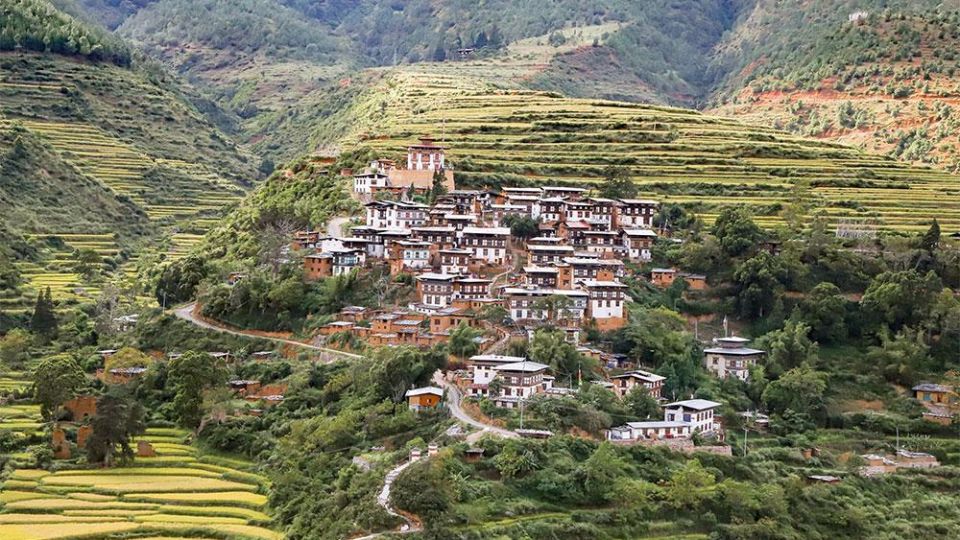June 17, 2025
THIMPHU – The centuries-old village of Drinchengang (formerly Rinchengang) in Wangdue is poised for a major transformation.
The clustered settlement, once home to the country’s legendary master stone masons, will become the country’s first heritage village to be redeveloped under a Royal Initiative into an Innovative Model Village, a fusion of cultural preservation, digital innovation, and sustainable living.
Established in the 17th century, Drinchengang was built by artisans brought by Zhabdrung Ngawang Namgyel to construct dzongs and temples across the country, particularly Wangdue dzong. With its distinctive adobe homes and terraced fields, the village has long been regarded as a living relic of the country’s architectural and cultural heritage.
The village comprises 86 households with a population of around 800 people, spread across approximately 24 acres of land. The village is divided into two chiwogs, Drinchengang Lho and Drinchengang Jang.
The groundbreaking ceremony for Phase I of the Drinchengang Village Development Project was held yesterday.
As part of the project, the current inhabitants will be relocated to a new site in Barithang, about few kilometres from the village. The relocation will improve the lives of Drinchengang’s 86 households, who follow the Maephu tradition, a unique cultural practice where families live together under one roof but cook in a shared kitchen using their own separate rations.
Each family will be granted freehold land ownership and a newly constructed home modeled after traditional Drinchengang architecture.
The relocation site at Sulalumpa was approved by the Project Steering Committee.
There were also safety concerns in the old village, with structures at risk of collapsing.
The housing designs at the new location will replicate the aesthetic charm of Drinchengang while incorporating modern construction standards. Temporary transit camps will be built for residents during the transition, supported through His Majesty’s Kidu.
By integrating cultural preservation with sustainable economic practices and digital advancement, the project aims to empower residents to improve their livelihoods without losing connection to their ancestral identity.
The project will also serve as a template for future projects across villages in the country.
Phase I will focus on developing key site infrastructure, interim housing for inhabitants, and ensuring that their livelihoods remain stable during the transition.
Future initiatives include eco-tourism, cultural industries, digital integration, and community-led enterprises. The development is divided into phases.
According to Toedtsho gup, the residents have expressed their support for the initiative.
Residents interviewed by Kuensel welcomed the project with a mix of excitement and cautious optimism. While most support the move, some expressed concern about the current state of the access road leading to Sulalumpa.
Rinchengang largely depends on paddy farming and vegetable cultivation, although limited land availability restricts large-scale vegetable farming.
The village is also home to a nearly 300-year-old traditional house, which was renovated but now remains locked and uninhabited. It has remained vacant since the passing of its former occupants, while their son now lives in Chukha.
According to sources, there are plans to introduce an entrance fee as part of a broader tourism revenue strategy to ensure the village’s long-term sustainability. However, details such as the fee structure, exemptions, and collection mechanisms are yet to be finalised.
Further decisions will be made as the project progresses into the execution phase.


